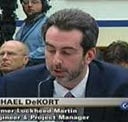While some of the points you are making are correct and helpful they are functionally useless given the environment you and the industry are choosing to do your development and testing in. Your F-35 is better than the other’s paper airplane-but neither can get remotely close to the sun.
What you said here is the key. It is why every engineering method used will fail — “These machines can only test their software by driving around in the real world. It is extremely expensive and time consuming to test just a thousand miles, let alone millions of miles in the real world.”
First it is hundreds of billions of miles. And at a cost of hundreds of billions of dollars per company. It is a myth that public shadow and safety driving can create a legitimate autonomous vehicle and that the lives the process takes are necessary and for the greater good. It is impossible to drive the trillion miles or spend $300B to stumble and restumble on all the scenarios necessary to complete the effort. In addition, the process harms people for no reason. The first issue is handover. The process cannot be made safe for most complex scenarios because the time to regain proper situational awareness and do the right thing, especially in time critical scenarios. cannot be provided. Another dangerous area is learning accident scenarios. AV makers will have to run thousands of accident scenarios thousands of times to accomplish this. That will cause thousands of injuries and deaths.
What all of that means is you must use simulation for most of the development and testing. However, the systems that are out there, all based on gaming technology, have several architectural flaws that prohibit it from creating a legitimate digital twin. A true digital twin is NOT great looking visuals and active sensor artwork fueled by ray tracing. It means every exact real-world object, sensor is modeled to be or act like they do in the real-world. To include hundreds of actual radars in a dense city environment modeled with the direct and reflective interference from other radars. DoD simulation technology can provide this so you can create the scnerios to reach an appropriate and verifiable level of due diligence.
